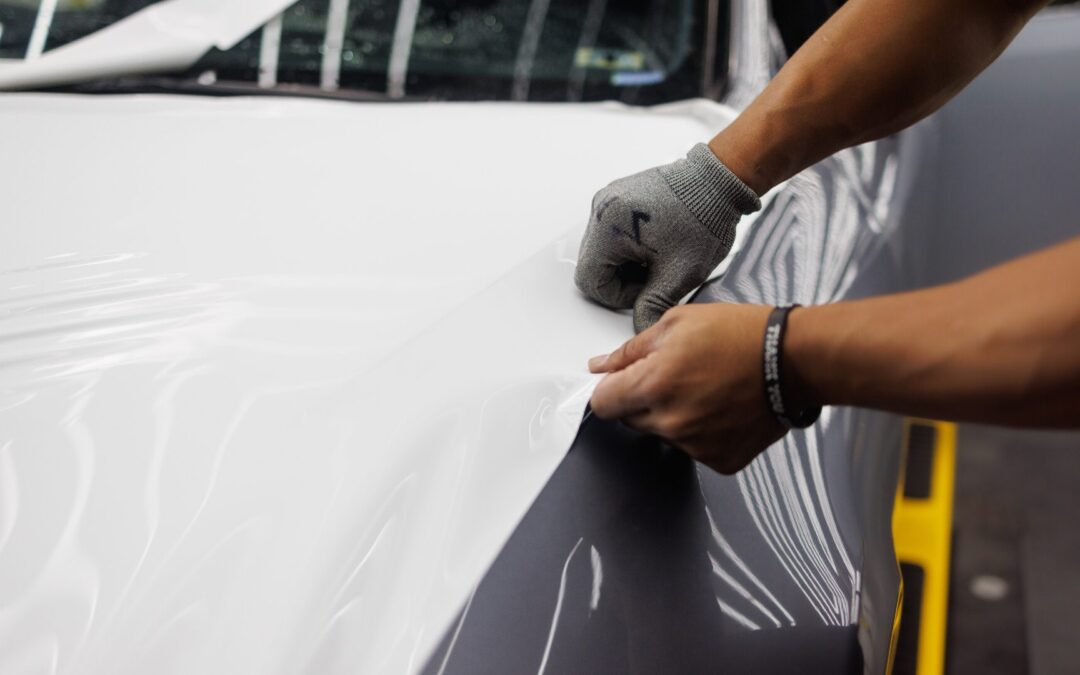A professionally installed vehicle wrap is more than just mobile advertising, it’s a significant investment in your brand’s image and your vehicle’s protection. Wraps shield factory paint from UV rays, road debris, and everyday wear, all while turning your car, van, or truck into a rolling billboard. But to keep your vinyl looking fresh and vibrant for years, proper care and maintenance are essential. In this in-depth guide, we’ll walk through everything you need to know, routine cleaning best practices, seasonal care tips, quick fixes for common issues, and long‑term strategies to maximize your wrap’s lifespan and maintain that “just wrapped” look mile after mile.
1. Why Proper Maintenance Matters
- Preserves Color and Gloss
UV rays, chemicals, and pollutants can dull or fade vinyl over time. Gentle cleaning and protective treatments keep colors bright and finishes glossy. - Prevents Edge Lift and Peeling
Dirt, moisture, and road salt that work their way under wrap edges lead to lifting, curling, and ultimately full‑panel failure. Regular inspections and edge‑sealing nip issues in the bud. - Extends Wrap Lifespan
High‑quality vinyl wraps typically last 3–5 years, sometimes longer in mild climates. With proper care, you can push that lifespan toward the upper end of the spectrum, delaying costly rewraps. - Protects Factory Paint
A well‑maintained wrap acts as a sacrificial barrier. When it’s time to remove or replace the wrap, the factory paint beneath remains virtually unscathed.
2. Routine Cleaning Best Practices
The cornerstone of wrap maintenance is hand‑washing. Automated car washes, especially those with rolling brushes or high‑pressure jets, can damage vinyl edges and abrade the laminate.
2.1 Gather the Right Supplies
- pH‑Neutral, Wrap‑Safe Soap: Automotive soaps formulated for vinyl.
- Two Soft Buckets: One for soapy water, one for rinsing your wash mitt.
- Chenille Microfiber Wash Mitt: Traps dirt in fibers, reducing swirl risks.
- Edgeless Microfiber Drying Towels: Blot dry, no wiping, for streak‑free results.
- Vinyl‑Safe Detail Spray/Protectant: Replenishes UV protection and sheds water.
2.2 The Two‑Bucket Wash Method
- Initial Rinse: Use a gentle garden‑hose spray (no nozzle) to remove loose dirt and grit.
- Soapy Wash: Dip your mitt in bucket one; wash a small section at a time, moving top to bottom.
- Rinse Mitt: After each pass, dip your mitt into bucket two to rinse away contaminants.
- Repeat: Reload mitt in bucket one and continue section by section.
- Final Rinse: Thoroughly rinse all soap, residue can dull the wrap and attract dirt.
- Blot Dry: Use edgeless microfiber towels and gently blot dry to avoid streaks and swirl marks.
2.3 Avoid These Common Pitfalls
- High‑Pressure Washers: Jets above 1,000 psi can lift edges and force water under the wrap.
- Abrasive Brushes or Sponges: Stiff bristles or textured sponges scratch laminate.
- Citrus, Solvent, or Ammonia‑Based Cleaners: These degrade adhesives and soften vinyl, leading to bubbling and peeling.
- Tire Shine Overspray: Many dressings contain solvents that haze or soften vinyl surfaces, apply carefully and rinse any overspill immediately.
3. Seasonal Care Tips
Climate extremes accelerate vinyl aging and adhesive breakdown. Tailoring your maintenance regimen to the season helps your wrap weather sun, heat, cold, and road chemicals.
3.1 Summer Survival
- UV‑Resistant Sealant: Apply a dedicated wrap protectant or ceramic spray every 3–4 months to block harmful rays.
- Shaded Parking: Whenever possible, park under cover or use a reflective windshield sunshade to reduce interior heat and vinyl stress.
- Gentle Cooling: Avoid hosing down a hot wrap, let panels cool below 110°F before rinsing to prevent rapid temperature shock.
3.2 Winter Wrap Care
- Snow & Ice Removal: Use a soft‑bristled brush or microfiber snow mitt to clear loose snow. For thin ice films, spray a wrap‑safe de‑icer (alcohol‑based, not citrus) and let dwell before gently sweeping away.
- Road‑Salt Rinse: Salt and de‑icers promote corrosion at seams. Rinse underside and wheel wells weekly to flush chemicals.
- Warm‑Water Washes: In freezing temperatures, warm water helps dissolve salt without stressing the vinyl.
4. Annual Inspection Checklist
Twice yearly, ideally at the start of spring and fall, conduct a thorough wrap “health check”:
- Edge Seams: Inspect for any lifting, curling, or visible moisture ingress.
- Small Tears or Punctures: Look for any nicks, especially around door handles and wheel wells.
- Color Consistency: Note any fading or gloss loss in sun‑exposed areas (roof, hood).
- Laminate Integrity: Watch for bubbling under the laminate layer.
- Hardware & Mount Points: Confirm that roof racks, antennas, and moldings haven’t shifted or stressed the wrap.
Professional Repairs: If edge lifts exceed 1/8″ or bubbles cover more than a few square inches, schedule a pro‑grade spot repair or edge‑re‑seal. Early intervention prevents full‑panel failures.
5. Quick Touch‑Ups On the Go
Life on the road brings unexpected debris, bird droppings, bug splatter, tree sap. Handling these hazards promptly protects both your wrap and its appearance.
- Bird Droppings & Tree Sap: Rinse immediately with water. For stubborn residue, gently blot with 70% isopropyl alcohol on a microfiber cloth, then rinse.
- Bug Guts: Use a wrap‑safe bug‑and‑tar remover. Spray, let sit no more than 60 seconds, then wipe away with a damp cloth.
- Road Tar & Grease: Tar removers formulated for vinyl (e.g., Stoner Tarminator) lift debris without harming the laminate. Follow with a rinse.
6. Protective Add‑Ons
To push your wrap’s durability even further, consider these enhancements:
- Clear‑Coat Overwrap Films: A transparent vinyl layer adds scratch resistance and UV shielding. Lasts 3–5 years.
- Spray‑On Ceramic Coatings: Bonds to the wrap’s surface, repelling water, dirt, and UV, a lower‑cost seasonal boost.
- Window‑Tint Vinyl: For light protection against interior heat and additional branding opportunities.
7. Storage & Long‑Term Layover Advice
If you park wrapped vehicles for extended periods, seasonal units, demo cars, or event trailers, proper storage preserves vinyl integrity:
- Breathable Car Covers: Protect from dust and debris without trapping moisture.
- Climate‑Controlled Garages: Aim for temperatures between 40–80°F to avoid thermal expansion or contraction.
- Monthly Check‑Ins: Even in storage, inspect for moisture under covers and wipe down dust accumulation.
8. Long‑Term Value and ROI
Maintaining your wrap not only preserves its advertising impact but also maximizes your total cost of ownership:
- Extended Lifespan: With diligent care, many wraps exceed their 5‑year warranty, delivering prolonged brand exposure.
- Protected Paint: Sacrificial vinyl keeps factory paint pristine, enhancing eventual resale or trade‑in value.
- Consistent Brand Presence: A clean, vibrant wrap reinforces trust and professionalism, critical for customer perceptions.
Conclusion
A vehicle wrap is more than eye-catching art, it’s an ongoing investment in your brand and your fleet’s longevity. By adopting a structured maintenance routine, regular hand‑washes, seasonal care, routine inspections, and prompt touch‑ups, you ensure that your wrap continues to turn heads and deliver impressions mile after mile.
Ready to keep your wraps looking showroom‑fresh? Contact TNT Signs and Graphics for professional installation and maintenance services:
📞 (707) 555‑1234
🌐 www.tntsignsandgraphics.com
Protect your investment, preserve your paint, and maintain a powerful branded presence on the road, every single day.




